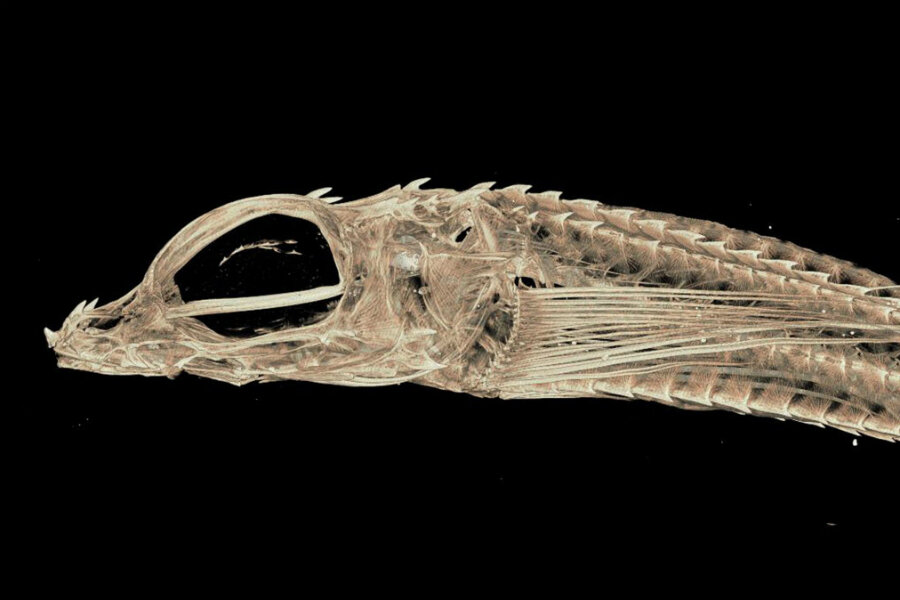What scientists could learn from more than 25,000 'digitized' fish species
Loading...
Adam Summers strives toward an unusual goal: to run every fish in the world through a scanner.
It may sound a bit like a high school prank, but the work couldn’t be more serious. Dr. Summers intends to digitize every fish known to man – more than 25,000 species – via computed tomography (CT) scanning. The project, researchers say, could change the way marine biologists conduct research.
Summers is a professor of biology at the University of Washington, specializing in biomechanics. But he may be better known as the “fabulous fish guy” who advised Pixar on fish movement for the movies “Finding Nemo” and “Finding Dory.”
In November, Summers raised $340,000 to install a small CT scanner at Friday Harbor Laboratories, which is owned by the University of Washington and located on San Juan Island. CT scans can cost up to $2,000 per image, so Summers began uploading his scans for free on the Open Science Framework.
"If you get a 3-D reconstruction, you can actually look through the animal and see the different components of varying tissue density," Jelle Atema, a professor of biology at Boston University, says in an interview with The Christian Science Monitor.
Summers’ labor of love was warmly received. He launched a formal project with an ambitious goal: to create a single, collaborative database with 3-D images of every extant fish. And with new techniques, such as multiple specimen scanning, this ambitious project may actually be possible.
"It wasn't just a joke anymore. We could actually say it and have a hope of actually getting every fish scanned," Summers told the Associated Press.
Summers has invited other scientists to use his scanner, or add their own scans to the index. All images will be freely available, allowing researchers to analyze otherwise inaccessible specimens.
"Here you have a digitized version of these museum specimens – although I have to admit that the resolution, and the kinds of things you can see, are to some degree limited," says Dr. Atema, who is also an adjunct scientist at the Woods Hole Oceanographic Institution. "But within those limits you have almost unlimited access to the species. You don’t have to travel to some exotic fish collection in Europe from the 15th century."
Summers and colleagues have already digitized more than 500 specimen from museum collections. Eventually, they hope to scan all of about 28,000 known fish species.
Traditionally, biologists use actual specimens to do physiological or behavioral research. But they can also glean valuable information from 3-D images. Fish skeletons can provide new insights on swimming and prey capture, and a high-resolution CT scan can be a sort of "virtual dissection."
"I think it will be unique in the ability to compare structures across a very wide variety of taxa," Atema says. "Maybe you get a single animal that someone dredges up from the deep sea and have no clue what it’s all about. You could scan it and do a comparison with other fish to see what relationships may exist."
But an expansive database won’t just benefit researchers. It may also find its way into classrooms, in hopes of inspiring the next generation of ichthyologists.
"We're taking advantage of modern technology," Atema says. "When you have that easy access, you can be a school teacher in God-knows-where, pull it up on your computer and show your class. And kids might get very excited about it. There are some really weird fishes out there, and that’s fantastic for kids. To then use it as a teaching tool would be really great."








